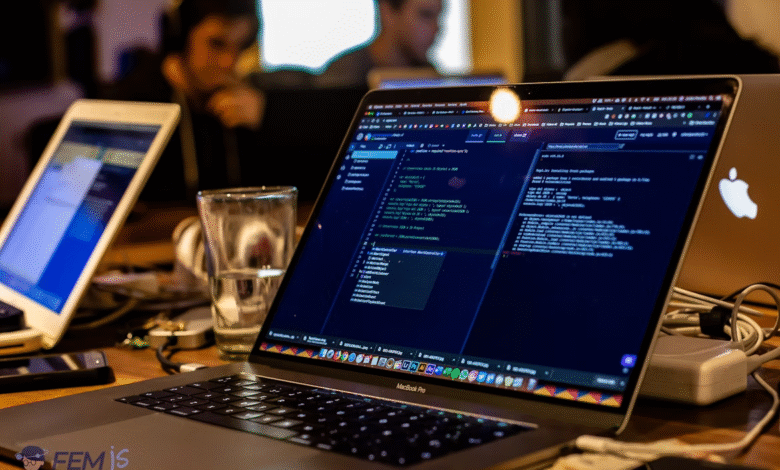Can ChatGPT Actually Build Your Website?

The promise seemed almost too good to be true. Marcus, a fitness coach with 15,000 TikTok followers, had spent weeks procrastinating on creating a proper landing page for his online coaching program. Then a YouTube ad caught his attention: “Build Professional Websites in Minutes with AI!”
Intrigued by the possibility of skipping expensive developers and complicated website builders, Marcus decided to put ChatGPT to the test. Armed with nothing but determination and a detailed prompt, he set out to create the perfect landing page for his social media audience. Three hours later, staring at a wall of HTML code that looked impressive but functioned like a broken calculator, Marcus realized he might have been a bit too optimistic.
The AI Website Creation Experiment
The idea of AI-generated websites isn’t entirely fantasy. ChatGPT can indeed produce HTML, CSS, and even JavaScript code that resembles a functional webpage. Feed it the right prompts, and you’ll receive clean-looking code complete with responsive design elements, contact forms, and professional styling.
But here’s where the rubber meets the road: getting code and getting a conversion-optimized landing page are two entirely different challenges. Marcus discovered this the hard way when his AI-generated page looked decent in a browser but failed spectacularly when it came to actually converting his TikTok traffic into paying clients.
The fundamental issue isn’t that AI lacks coding ability – it’s that creating effective landing pages requires understanding user psychology, conversion optimization, mobile behavior patterns, and the specific nuances of social media traffic. These are insights that come from experience, testing, and deep understanding of how different audiences behave online.
The Strategic Alternative
Rather than wrestling with AI-generated code that requires extensive technical knowledge to implement properly, smart social media creators take a different approach entirely. They recognize that their time is better spent creating content and engaging with their audience rather than debugging HTML and troubleshooting hosting issues.
The most effective solution involves using a link in bio website builder that already incorporates conversion optimization best practices, mobile-first design, and social media traffic behavior patterns. These platforms handle the technical complexity while focusing on what actually drives results for social media audiences.
This approach acknowledges a simple truth: the goal isn’t to become a web developer – it’s to create effective conversion paths for your existing audience. This requires platforms that understand social media behavior, prioritize mobile optimization, and make it easy to test and iterate based on real performance data.
What AI Gets Right (And Wrong)
ChatGPT excels at creating structurally sound code. It can generate responsive layouts, implement basic contact forms, and even suggest reasonable color schemes and typography choices. For someone with coding knowledge who needs a starting template, AI can certainly save time on the initial setup.
However, AI struggles with the strategic elements that actually drive conversions. It doesn’t understand that social media visitors have different expectations than search engine traffic. It can’t optimize for the split-second attention spans of TikTok users or design for the thumb-scrolling behavior of Instagram audiences.
More importantly, AI can’t test and iterate based on real user behavior. It might suggest adding a newsletter signup form because that’s a common website element, but it won’t know that your particular audience converts better with direct booking links or product purchase buttons.
The Technical Reality Check
Even if you manage to get functional code from ChatGPT, you’re still facing significant technical hurdles. The code needs to be hosted somewhere, connected to payment systems, integrated with email marketing tools, and optimized for mobile performance. Each of these steps requires technical knowledge that goes well beyond asking AI for code.
Marcus spent an additional two days trying to figure out how to make his contact form actually send emails, how to connect a payment processor, and why his page looked perfect on desktop but broken on mobile devices. The “simple AI solution” had evolved into a complex technical project requiring skills he didn’t possess.
According to research from the Stanford Human-Centered AI Institute, while AI tools can accelerate certain development tasks, they still require significant human oversight and technical expertise to produce production-ready applications.
The Conversion Optimization Gap
Here’s what Marcus’s experiment revealed about the real challenge: building a landing page isn’t primarily a coding problem – it’s a conversion optimization problem. The most beautiful, technically perfect page in the world won’t generate results if it doesn’t understand and serve your specific audience’s needs.
Social media audiences, in particular, require carefully crafted experiences that acknowledge how they discovered your content and what they’re expecting to find. This means understanding platform-specific behaviors, mobile optimization requirements, and the psychological triggers that turn curious followers into customers.
AI can’t run A/B tests, analyze heat maps, or understand why your TikTok audience responds differently to certain calls-to-action than your Instagram followers might. These insights come from platforms specifically designed to optimize for social media conversions.
When AI Makes Sense (And When It Doesn’t)
ChatGPT and similar AI tools can be valuable for specific, limited tasks: generating copy ideas, creating basic HTML structures for developers to refine, or brainstorming layout concepts. For business owners who already have technical teams and want to accelerate certain development processes, AI can provide useful starting points.
However, for social media creators who need functional, conversion-optimized landing pages without technical expertise, AI-generated code creates more problems than it solves. The gap between “code that looks like a website” and “a page that converts social media traffic” is substantial.
Setting Realistic Expectations
AI will undoubtedly continue improving, and future versions may better understand conversion optimization and user experience design. But today’s AI tools are best viewed as assistants for specific tasks rather than complete solutions for business-critical needs like landing page creation.
Marcus eventually abandoned his AI experiment and opted for a link-in-bio solution designed specifically for social media traffic. Within a week, he had a mobile-optimized landing page that converted TikTok viewers into coaching clients at a 23% rate – far better than his AI-generated attempt had ever achieved.
The lesson isn’t that AI is useless – it’s that the right tool depends on your specific needs and skill level. For social media entrepreneurs who want results rather than coding practice, specialized platforms designed for their audience and business model will always outperform general-purpose AI solutions.
Your followers are ready to take the next step with your business. The question is whether you’ll spend time fighting with code or focus on creating the seamless experience they’re expecting.



